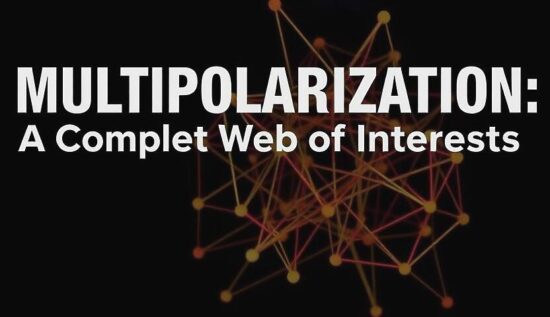The report accompanying the conference consists of nine chapters, spanning 120 pages of text. The introduction begins with a now-familiar observation in foreign policy, that the world is becoming increasingly multipolar. While the world may not be entirely multipolar, the trend of multipolarization is a fact.
The current international system exhibits elements of unipolarity, bipolarity, multipolarity and non-polarity. However, a clear shift towards a greater number of states vying for influence is observable. This multipolarization is not only reflected in the distribution of material power, but also in the ideological polarization of the world. The political and economic liberalization that defined the post-war period is no longer the sole benchmark, as it faces challenges from both within, in the form of nationalist populist movements in many liberal democracies and without, in the form of a growing ideological divide between democracies and autocracies, as well as the existence of competing or conflicting models of order.
The multipolarization of the world elicits mixed feelings worldwide. Optimists see opportunities for a more inclusive global governance and a reduction in Washington’s dominance, which has long been seen as overbearing by many. Pessimists warn of a heightened risk of chaos and conflict and a subverted effective cooperation.
According to the Munich Security Index 2025, people in G7 countries are less optimistic about a multipolar world than those in BRICS countries, with national perspectives shaped by different views on the current and desired international order.
Chapter 2 of the report focuses on Donald Trump’s presidential victory, which has buried the US consensus in foreign policy since the Cold War, where liberal internationalism was seen as the best strategy for US interests. For Trump and many of his supporters, the international order created by the US is a bad deal. As a consequence, the US may abandon its historical role as a security guarantor in Europe, with significant implications for Ukraine. The US foreign policy of the coming years will likely be shaped by a bipolar competition with Beijing, which could accelerate the multipolarization of the international system.
China is seen as the most prominent and powerful advocate of a multipolar order, with Beijing eager to present itself as an advocate for countries in the global South. However, many in the West view China’s rhetoric as a veil for a great power competition with the US. Despite China’s significant success in mobilizing the dissatisfied with the current world order, the country currently faces domestic challenges. In response to a potential US retreat from international commitments or a growing estrangement from long-standing partners, China may also profit from the situation.
The EU is the subject of Chapter 4, as the authors see the EU as embodying the liberal international order. The growing challenges to central elements of this vision pose a particularly severe challenge for the EU. Russia’s war in Ukraine and the rise of nationalist populist movements in many European societies also threaten core elements of the EU’s liberal vision. The report notes that a Trump re-election could further exacerbate these challenges and rekindle the debate on whether the EU should become a more autonomous player in international politics, potentially emboldening populist movements that could deepen the internal divisions of Europe and undermine the EU’s ability to handle crises.
The assessment of Russia in Chapter 5 concludes that no state has invested more energy in shaking the international order than Russia. Moscow envisions a multipolar world order comprising “civilization states” with Russia seeing itself as one. Smaller countries, such as Ukraine, are seen as falling within the sphere of influence of a civilization state. The next passage from Chapter 5 is important in understanding the authors’ perspective, as it states that despite the discrepancies between Moscow’s self-image and its actual power base, Russia’s efforts to disrupt the stabilization of the international order have been successful and the country faces growing economic problems and the consequences of imperial overstretch. Whether Russia can implement its vision of multipolar influence zones depends on the resistance of others.
In Chapter 6, the authors note that Indian leadership is critical of the existing international order and embracing the idea of multipolarity, which is closely tied to India’s search for a place among the leading powers of the world. While New Delhi makes progress in increasing its international profile, India also faces challenges: externally, China’s strategic footprint is growing among India’s neighbors and domestically, the country’s economy is plagued by structural weaknesses and the political and cultural pluralism is in decline. Moreover, despite presenting itself as a voice of the global South, India’s foreign policy of multi-alignment raises doubts about whether India is prepared to take on a more prominent role in global peace efforts. This is a veiled criticism of India’s refusal to take a stance against the Western, anti-Russian sanctions policy.





